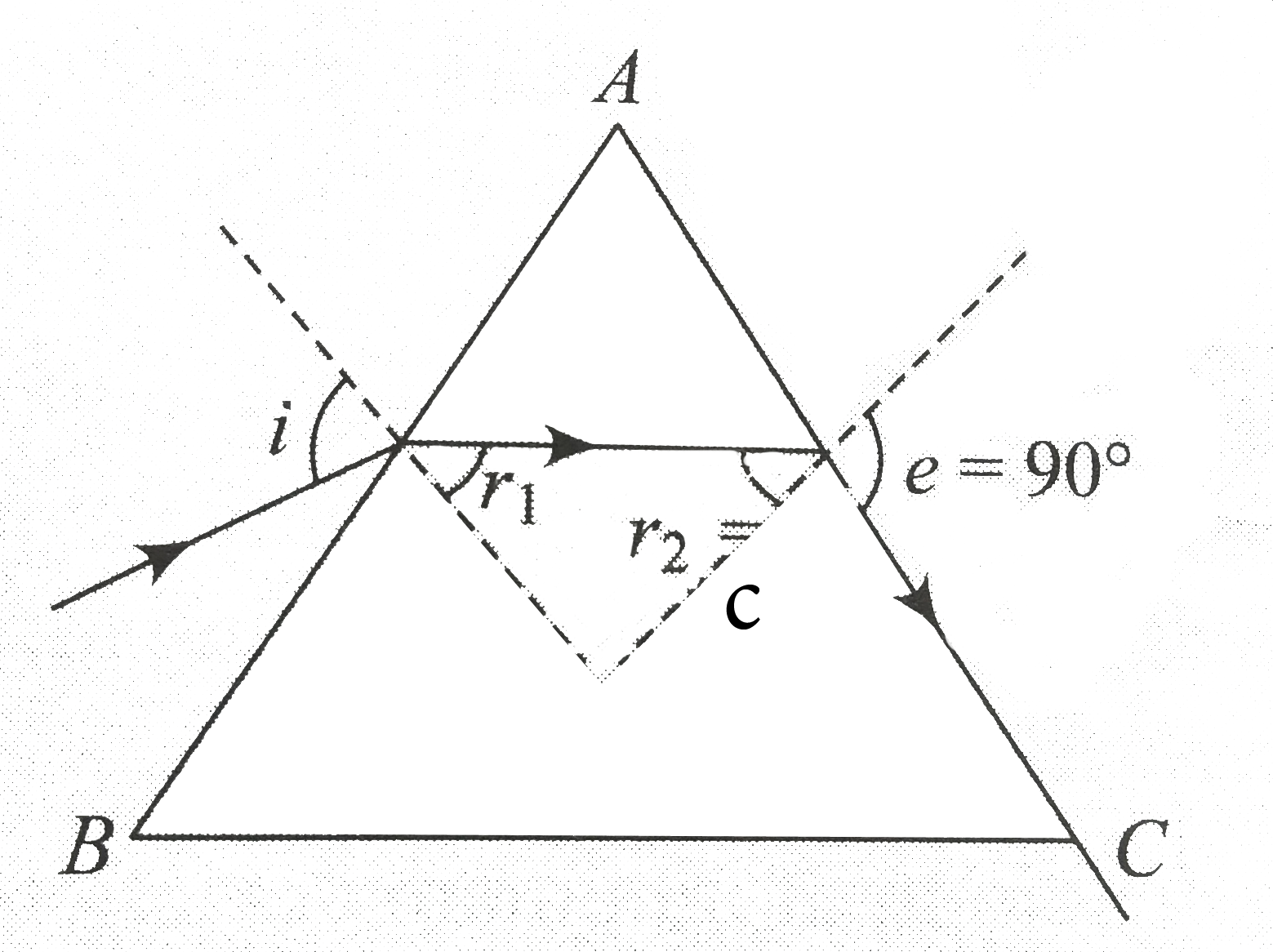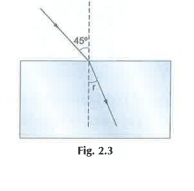A cubical transparent slab is used as a paper weight. What should be the minimum refractive index of the material of the slab so that letters below it are not visible from any of its vertical faces.
√2
√3
√5
√5/√3
Use the concept of total internal reflection.
Topper's Solved these Questions
- BOOK - FIITJEECHAPTER - GMP ASSESMENTEXERCISE - Assertion & Reason15videos
GMP ASSESMENT
- BOOK - FIITJEECHAPTER - GMP ASSESMENTEXERCISE - Multiple Question58videos
GMP ASSESMENT
- BOOK - FIITJEECHAPTER - GMP ASSESMENTEXERCISE - Numerical Based61videos
GMP ASSESMENT
- BOOK - FIITJEECHAPTER - GENERAL PHYSICSEXERCISE - MATRIX MATCH TYPE3videos
GENERAL PHYSICS
- BOOK - FIITJEECHAPTER - GRAVITATIONEXERCISE - Numerical based Question2videos
GRAVITATION
Similar Questions
What should be the minimum value of refractive index of a prism, refracting angle A, so that there is no emergent ray irrespective of the angle of incidence?
 View Solution
View SolutionA rectangulat block of refractive index μ is placed on a printed page lying on a horizontal surface as shown in Fig. , Find the minimum value of μ so that the letter L on the page is not visible from any of the vertical sides.
 View Solution
View Solution
Knowledge Check
- Question 1 - Select One
What should be the minimum value of refractive index of a prism of refractive angle A, so that there is no emergent ray irrespective of angle of incidence?
AsinA2BcosA2CcosecA2DsecA2 - Question 2 - Select One
Word ‘Newton’s printed on a paper and is placed on a horizontal surface below a cubical glass. The minimum value of refractive index of a cubical glass for which letters are not visible from any vertical faces, of the glass, is (Critical angle =45°)
A√3B0.5C1D√2 - Question 3 - Select One
Light enters at an angle of incidence in a transparent rod of refractive index n. For what value of the refractive index of the material of the rod the light once entered into it will not leave it through its lateral face whatsoever be the value of angle of incidence.
An gt√2Bn = 1Cn = 1.1Dn = 1.3
A transparent glass slab (G) of thickness 6 cm is held perpendicular to the principal axis of a convex lens (L) as shown in the Figure. The refractive index of the material of the glass is 32 and its nearer face is at a distance 40 cm from the lens. Focal length of the lens is 20 cm. Find the thickness of the glass slab as observed through the lens.
 View Solution
View SolutionA glass slab of thickness 2cm and refractive index 2 is placed in contact with a biconvex lens of focal length 20cm. The refractive index of the material of the lens 1.5 . The far side of the lens is silvered. Where should an object be placed in front of the slab so that it images on to itself?
View SolutionA ray of light travelling in air falls on the surface of a transparent slab. The ray makes an angle of 45∘ with the normal to the surface. Find the angle made by the refracted ray with the normal within the slab. Refractive index of the material of the slab =√2.
 View Solution
View SolutionLight enters at an angle of incidence in a transparent rod of refractive index n. For what value of the refractive index of the material of the rod the light once entered into it will not leave it through its lateral face whatsoever be the value of angle of incidence.
View SolutionWhen light rays are incident on a thick transparent slab then these rays are partly reflected and partly refracted into the slab. At a certain angle of incidence θ, it is found that reflected and refracted rays are mutually perpendicular. What is refractive index of material ?
View Solution

